
 |
||||

 Title
Title
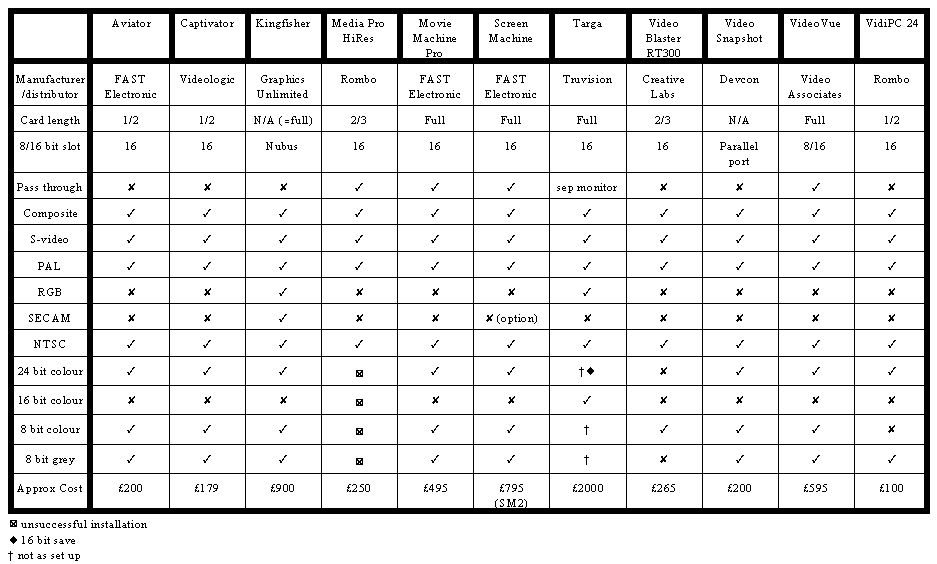 Table 3.2 listing the options for each card evaluated
Table 3.2 listing the options for each card evaluatedFigure 3.2 Comparison of Cards 
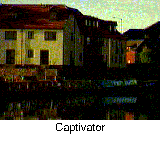
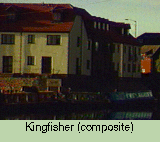
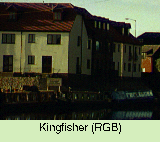
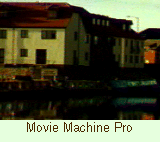

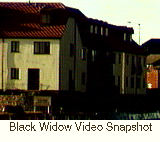
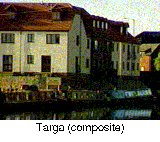
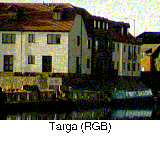
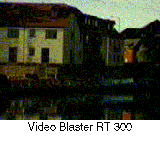
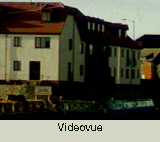
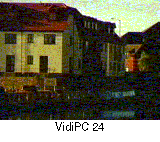
Figure 3.2 illustrates a portion of image #4 for each card. Please note that this portion is a constant pixel area (and therefore dependent on capture resolution) not different 'magnifications'. All the images captured for each card are available from the World Wide Web (http://www.ets.bris.ac.uk/home2.htm). The set of images used in this evaluation will also be scanned and captured onto Photo-CD for further in-house comparisons. These will also subsequently be available from the URL given. A preliminary examination of the captured images suggested that the Targa card (in RGB mode) gave the best overall image quality and was therefore used as a reference for the other cards (and the Targa in composite mode). AviatorAll the images were quite dark with an overall sepia cast. The right hand side of the slides were cropped and there was a slight (associated?) horizontal stretch. The ringing on edges (slide #3) was quite bad. In slide #5 the shadow detail was suppressed to a fair degree.CaptivatorAs with Aviator the images had an overall sepia tint and were quite dark. Ringing was quite bad, with more colour in the fringes than the Aviator. Shadow detail (slide #5) was fairly suppressed.KingfisherFor this card (as with the Targa) images were captured via RGB and composite inputs.Composite: a dark, slightly sepia tinted appearance characterised these images. Edges showed a little ringing. Detail in the shadow of slide #5 was slightly less than the Targa. RGB: captured images appeared slightly dark with a light sepia tint. No apparent ringing on edges. Shadow detail was comparable to the image taken from the composite input. Media Pro HiResUnfortunately nothing to comment on here as the card could not be installed successfully.Movie Machine ProThis card captured images that appeared soft (i.e. slightly diffuse) with a slight sepia cast. The images were slightly stretched horizontally so that the right hand side was cropped. Edges exhibited quite bad ringing. Detail in the shadow of slide #5 showed a fair degree of suppression.Screen MachineSlightly compressed horizontally, the images were also missing a small part of the right hand side. The soft appearance of these images was not helped by their overall greyness. There was slight ringing on edges. Shadow detail did not appear too bad, probably due in part to the lowish contrast.TargaFrom its composite input the images had a very slight pinkish tint, appeared a little bit brighter and the colours possibly slightly more saturated. Edges showed only a very small degree of ringing. Slide #5's shadow seemed to show more detail û maybe due to slight overall brightness.Taking an overall look at the Targa's RGB (our reference) in comparison to the other cards in the evaluation : the images tended to appear 'clean' and 'bright' with good contrast, shadow detail was also good and there was no apparent ringing on edges; colour balance seemed the most neutral of all the cards (possibly slightly on the 'cool' side).The 16 bit capture (both RGB and composite) did show some limitations, slightly more obviously on the greyscale images where some of the middle tones were missing. Video Blaster RT300A slight yellowish cast did not help the soft appearance of these images. The latter may have been due to the strange mosaic effect - this could be seen on most cards images (especially on zooming in) but to nowhere near the same degree - and/or the 8 bit capture depth. There was some ringing on edges but this was diffuse - possibly due to above effects. Shadow detail was not too bad but, unlike images grabbed at higher bit depths, 8 bit capture does leave much flexibility for adjusting brightness, contrast, colour balance etc.Video SnapshotThe overall appearance of images captured with this device (not a card) were that they were a little contrasty, with a slight pink tinge. Edges gave rise to slight ringing, with a (faint) contrasting 'ghost' around some of them. Shadows were quite dark and the detail was not there. Possibly this was why the images appeared contrasty - all tones below a certain value being read as black.VideoVueThese images were slightly soft and 'blocky' with an overall slight pink tint, although the general perception of the colour balance was that it was more neutral than most of the cards. A slight amount of ringing was visible on edges. Shadows were dark with moderate detail.VidiPC 24Images captured with this card, in addition to being slightly dark and 'soft', had a slight orange tint and, unfortunately, this tint was in the form of a gradient across the image (making it very difficult to remove in most image processing applications). The images were compressed horizontally. Even after the card was set up the black was still not really black (although, to be fair, further tuning may have corrected this). Edges gave rise to smearing in addition to a moderate amount of ringing. Shadow detail was slightly down. Figure 3.2 Colour plate. For each of the cards 320 x 240 pixel clips were taken from the same region of slide #4. As the images would have only been about 1 x 0.8ö they were resampled to 640 x 480 pixels (with very little apparent degradation) in order to make the effects more easily visible. Note that the varying proportion of the original image that can be seen is due to difference in the number of pixels (by each card) used to capture the whole image.Some points to look for: roof tile patterns; fringes on edges; shadow detail; colour balance (within printing limitations); loss of detail (e.g. lampost) against the sky. 
 Title
Title
|